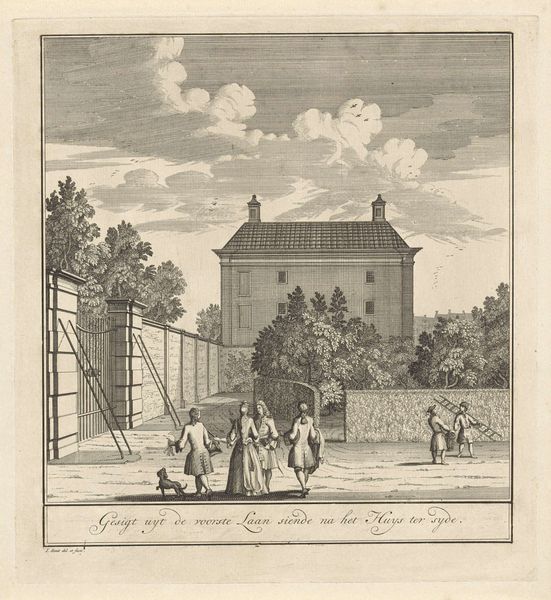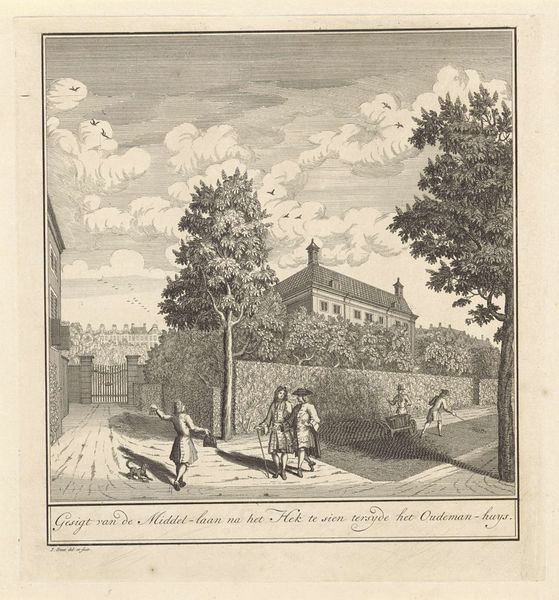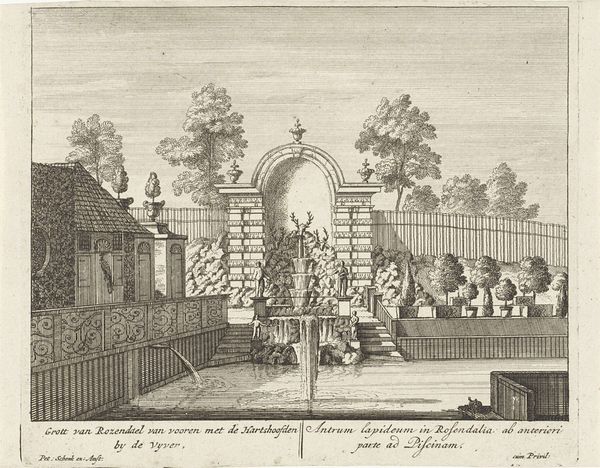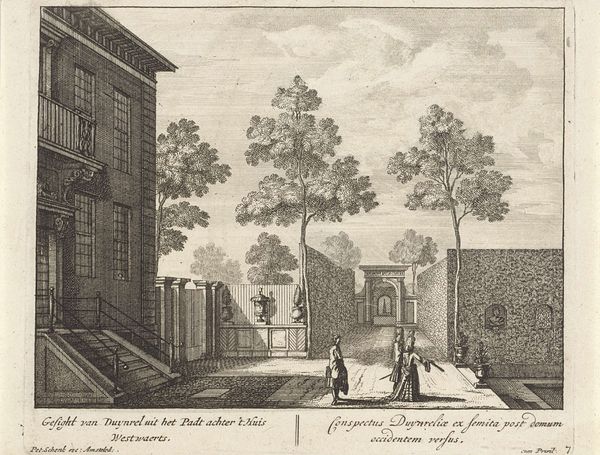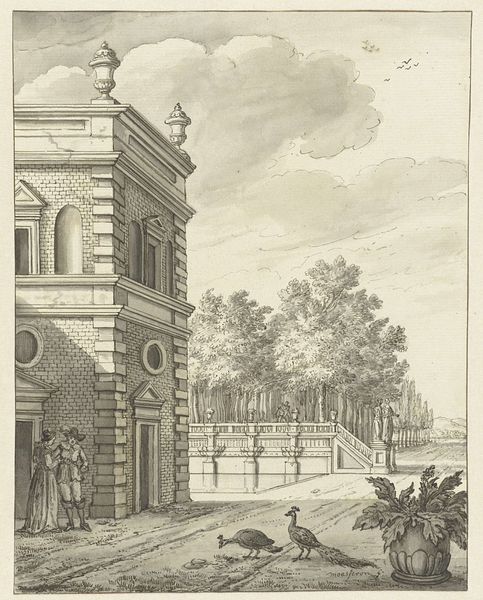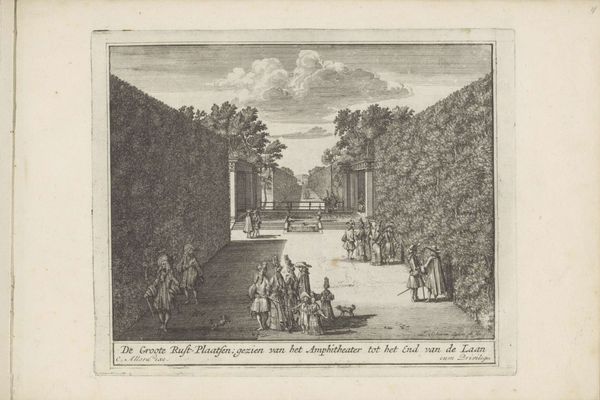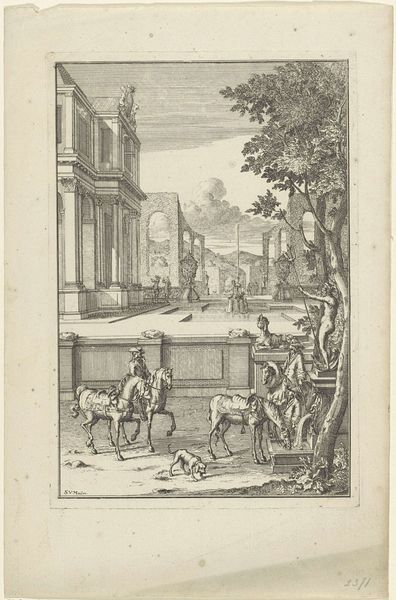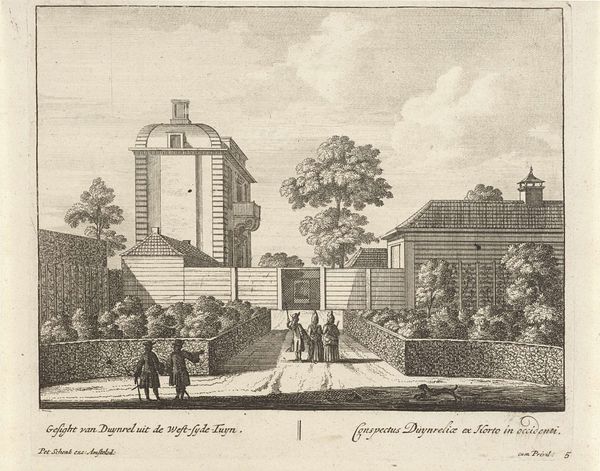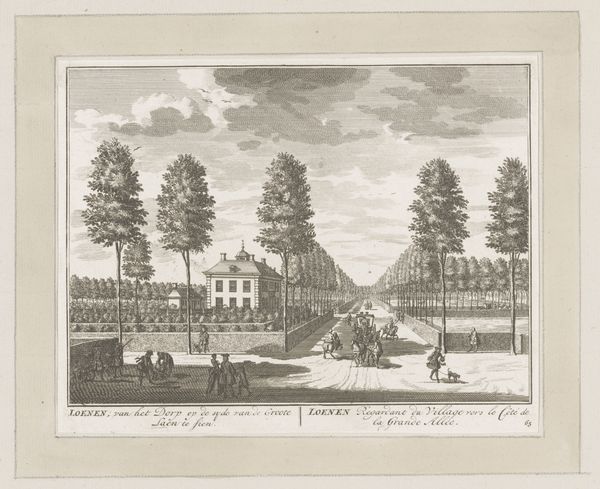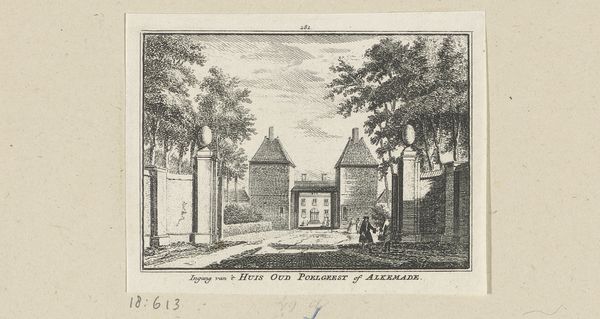
Gezicht op het Corvershof te Amsterdam, gezien richting de Weesperstraat 1723 - 1748
0:00
0:00
engraving
#
dutch-golden-age
#
old engraving style
#
landscape
#
cityscape
#
engraving
#
realism
Dimensions: height 263 mm, width 246 mm
Copyright: Rijks Museum: Open Domain
Curator: Take a moment to consider this 18th-century engraving by Jan Smit, titled "View of the Corvershof in Amsterdam, facing the Weesperstraat.” It's a glimpse into a world bustling with life. Editor: Immediately, what strikes me is the incredibly precise and meticulous process of this print. Look at the lines, the layers of labour. It almost romanticizes work through this sheer technical mastery. The paper must be of rag! Curator: There is such incredible detail for an engraving, and yes the light almost dances across the surface— the texture of that lone tree with such an enchanting form juxtaposed with the severe architecture makes my imagination take flight! But it feels… somber, doesn’t it? Like a memory fading into the monochrome. Editor: Yes, and if we focus on the Corvershof itself—we remember what the building was: a women's workhouse. Here it stands: labor materialized. Notice, too, how the building material contrasts with the workers themselves. This disparity speaks volumes. And engravings, after all, were also a means of mass communication! Dissemination of an idyllic past for sale. Curator: That labor element provides a deeper nuance now that you mention it! The way those horses are positioned pulling the coach contrasts against the stillness of the figures walking on the side path—that’s some great insight on your part. The Corvershof wasn’t simply a building, but a center of daily lives. And that one lone dog at the corner seems almost out of time to my senses. Editor: Exactly, it brings forward a paradox, where the piece serves the interests of those who likely lived quite far away from these sites—it connects art to capitalism. It makes you question who's the audience and who benefits most. It has also a high cost that relies on global markets and on very defined supply chain practices! Curator: Thank you for grounding my imagination so thoughtfully. It’s a reminder that art is never created in a vacuum. Editor: And thanks to you, for showing that materials aren't just cold matter, they have a spirit!
Comments
No comments
Be the first to comment and join the conversation on the ultimate creative platform.
